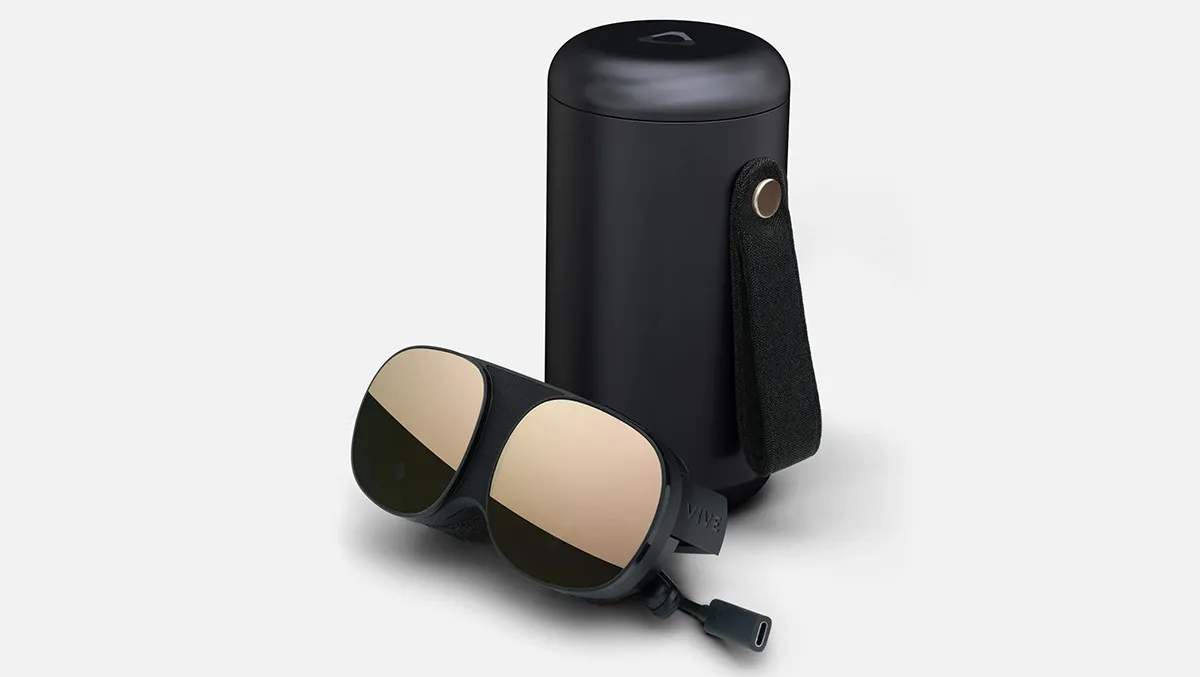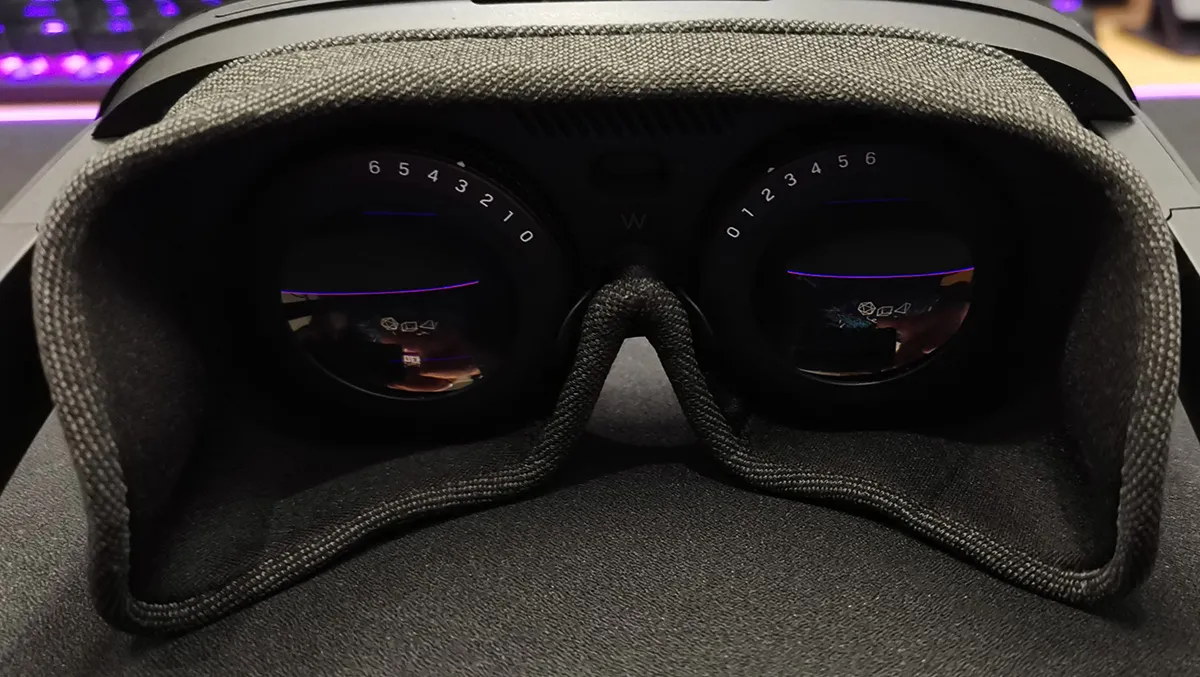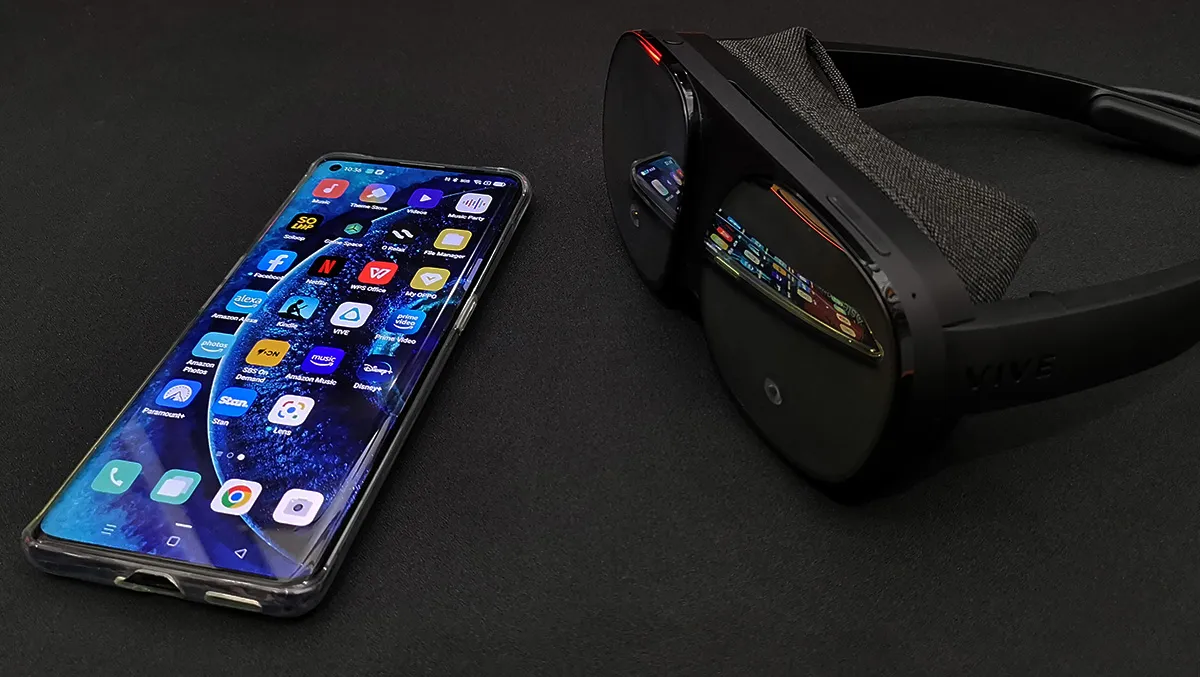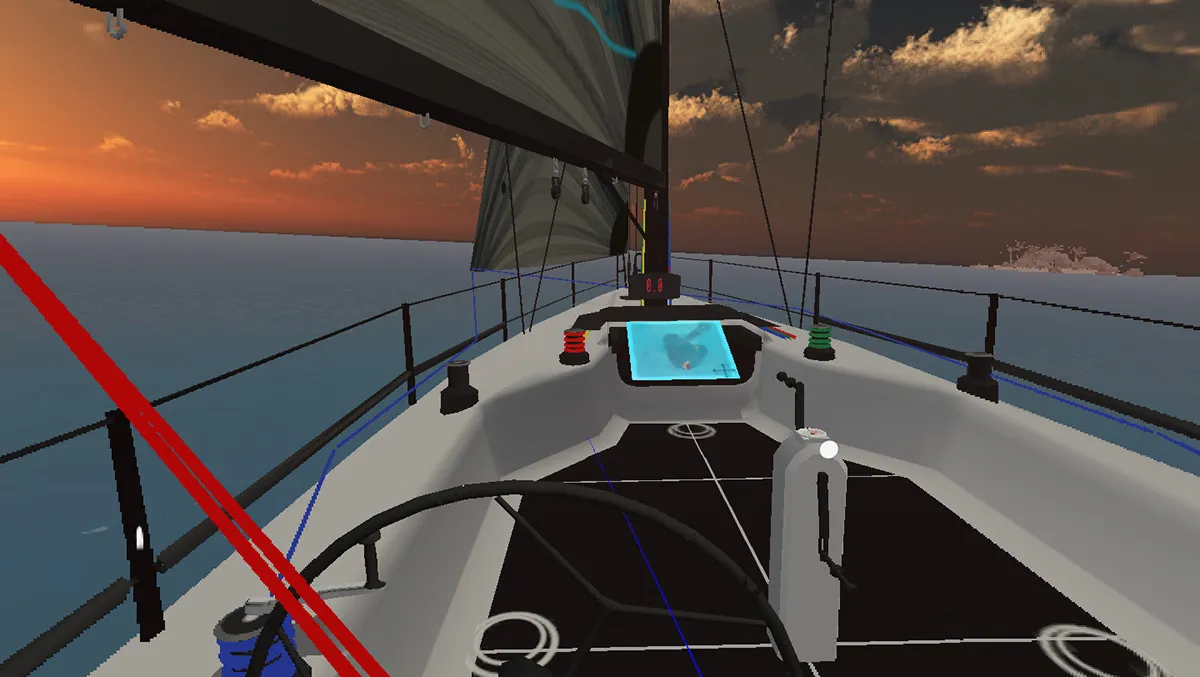
Hands-on review: HTC Vive Flow headset
HTC Australia sent over one of their Vive Flow headsets plus a compatible Oppo mobile phone for me to try out "The immersive VR glasses for on-the-go wellness".
It's an interesting marketing tagline and one that I'm surprised has not been used to market VR in the past. One of my first experiences having purchased HTC's original Vive headset back in 2016 was an app that had me standing on a mountain. The experience was so calming and real that I actually felt like I was on that grassy mountainside. My breathing even changed, like you do as you inhale crisp, fresh air. Similarly, VR experiences like theBlu, which allows users to experience an underwater environment surrounded by fish at the bottom of the ocean, standing on a shallow reef, or the deck of a shipwreck, is also strangely calming.
The ability of virtual reality to reprogram our thinking is not a widely discussed thought, particularly as a positive. But perhaps with devices like the HTC Flow, it will be.
The Vive Flow glasses are just how I thought VR headsets should have evolved after almost a decade of being commercially available. Instead, top end-VR headsets are still akin to strapping a heavy shoebox to your forehead. It's this unappealing design that's likely stunted the mainstream uptake of virtual reality. The Vive Flow glasses, whilst still not a cool pair of Ray-Bans, have the wearer not looking quite the dork that regular VR headsets do.

Instead of looking like a medieval torture device, the Vive Flow glasses look like a slightly oversized pair of gold mirrored sunglasses with a cloth skirt to block out the light. You can just about make out two cameras/sensors behind each of the reflective covers. They only weigh 189g as well. On the top of the frame, on the left side is the volume control and, on the right, a function button for controlling menus, etc. The foldable left and right arms house a very discreet speaker on each side. The glasses are powered via a USB Type-C cable that you can plug directly into your phone or a battery pack. The Flow is hot-swappable, giving you five minutes to change power supplies without the device switching off.
The Vive Flow also takes away the ambiguity over whether or not you should be wearing your glasses with them. And the answer is that you should not. During the setup process, you need to remove the cloth blackout skirt (which is held in place by magnets) and position a temporary nose clip in place. You can then adjust the setting for each eye independently to get a crystal-clear image.
The display is crisp with only a vaguely observable "screen door effect", whereby you can see the LCS screen's pixels. The Flow is also exceedingly comfortable to wear, especially when compared to the regular Vive Pro 2. The weight on your nose is little more than that of a pair of sunglasses.
Anyone that has used a VR headset will know just how hot they can get. The Flow glasses feature a cooling system that gently blows into the device, keeping your face cool. This makes the experience very pleasant and comfortable.
Everything about the physical design of the Vive Flow is a next-gen VR experience.
Of course, there's a big "but". And it's likely this big "but" was the reason why I had to ask HTC if I could check out the Vive Flow. It was surprising that I had to ask as they know that I'm a big fan of their Vive products and a great evangelist for VR in general. But they also know what I use VR for.
I've been a Vive user since the beginning. I was an early adopter of the OG Vive and dabbled with the Vive Cosmos for a bit as well. Currently, my Vive Pro 2 gets used for everything from flying planes in Microsoft Flight Simulator to dog-fighting among the stars in Elite: Dangerous. I've even placed a few engineering projects of mine into VR to take a look before construction. Paired with a top-of-the-range desktop PC, HTC's flagship Vive Pro 2 headset offers arguably the best consumer VR experience available today.
But the HTC Vive Flow does none of the above. Instead, it's been designed as a casual VR experience that only needs the power of your mobile phone to enjoy.
The Vive Flow has two 2.1" LCD screens offering 1600 x 1600 pixels per eye for a combined resolution of 3.2K, with a refresh of 75Hz. The field of view is stated as being 100 degrees, which looks about right, although the view is very circular through the lenses. The device has 4GB of RAM and 64GB of ROM. The two cameras that I mentioned support video pass-through (to avoid bumping into things) and six degrees of freedom inside-out tracking, so no need for external IR tracking equipment.
To get the most out of the Vive Flow, you will have to own a compatible Android phone from a very small list. At the moment the Flow does not support Apple phones. Phones require Miracast and HDCP 2.2 to cast content into VR or stream copy-protected services like Netflix in VR.
Whilst I was able to experience most of what the Flow could offer using my "incompatible" Huawei phone, HTC sent over an Oppo Find X2 Pro to test some of the Flow's more advanced casing functions.

By casting your mobile phone display into the Flow's display, you can watch Netflix and other streaming services on a huge virtual cinema screen in the virtual reality environment, wherever you are. It's a simple idea that is still very pretty impressive.
The Vive Flow uses HTC's Viveport storefront, which can be launched from the main menu. Here compatible applications can be purchased for quite modest sums. The apps are, for the most part, aimed at mindfulness and meditation, ranging from the sedate to the psychedelic.
VR video apps can be used to stream 180-degree and 360-degree videos into the headset. Users can embark on virtual journeys to real places and experience real events. Concerts and product launches can be watched in immersive 3D 360-degree videos.
There are a few experiences and games available on Viveport for the Vive Flow. I took a trip to The Louvre and found out about the secrets of the Mona Lisa in Mona Lisa: Beyond the Glass, had a tour of Jerusalem in The Holy City VR, sailed a yacht in Big Breezy Boat, and conquered my fear of heights with Richie's Plank Experience.

Vive Flow also works with more business-orientated apps like the Vive Sync virtual conferencing platform. Vive Sync transports users to exotic VR conference locations where they can meet up with colleagues, clients, and other participants, as well as view presentations, and interact with one another just as you would in person.
Despite its modest capabilities, the HTC Vive Flow is a remarkable device that likely represents a first look into the future of VR. The device does what it is designed to do very well. It's light and comfortable with that lovely cooling breeze to stop things from getting too hot. The display is clear and the eye adjustments easy-to-use, negating the need to squeeze glasses into the headset.
As a mediation aid, or for someone perhaps looking for a comfortable but no-nonsense VR platform for corporate use, the HTC Vive Flow has you covered. If you find yourself regularly watching movies on your phone, the Vive Flow can also be used to provide a "big screen" alternative.
As is the case with the Vive Pro 2 and the Vive Cosmos, the price point of the Vive Flow is rather high. At NZD$799/AUD$749.00 this is perhaps a bit too much for a device that, whilst incredibly innovative, still offers a very much cut-down VR experience for general VR users.


